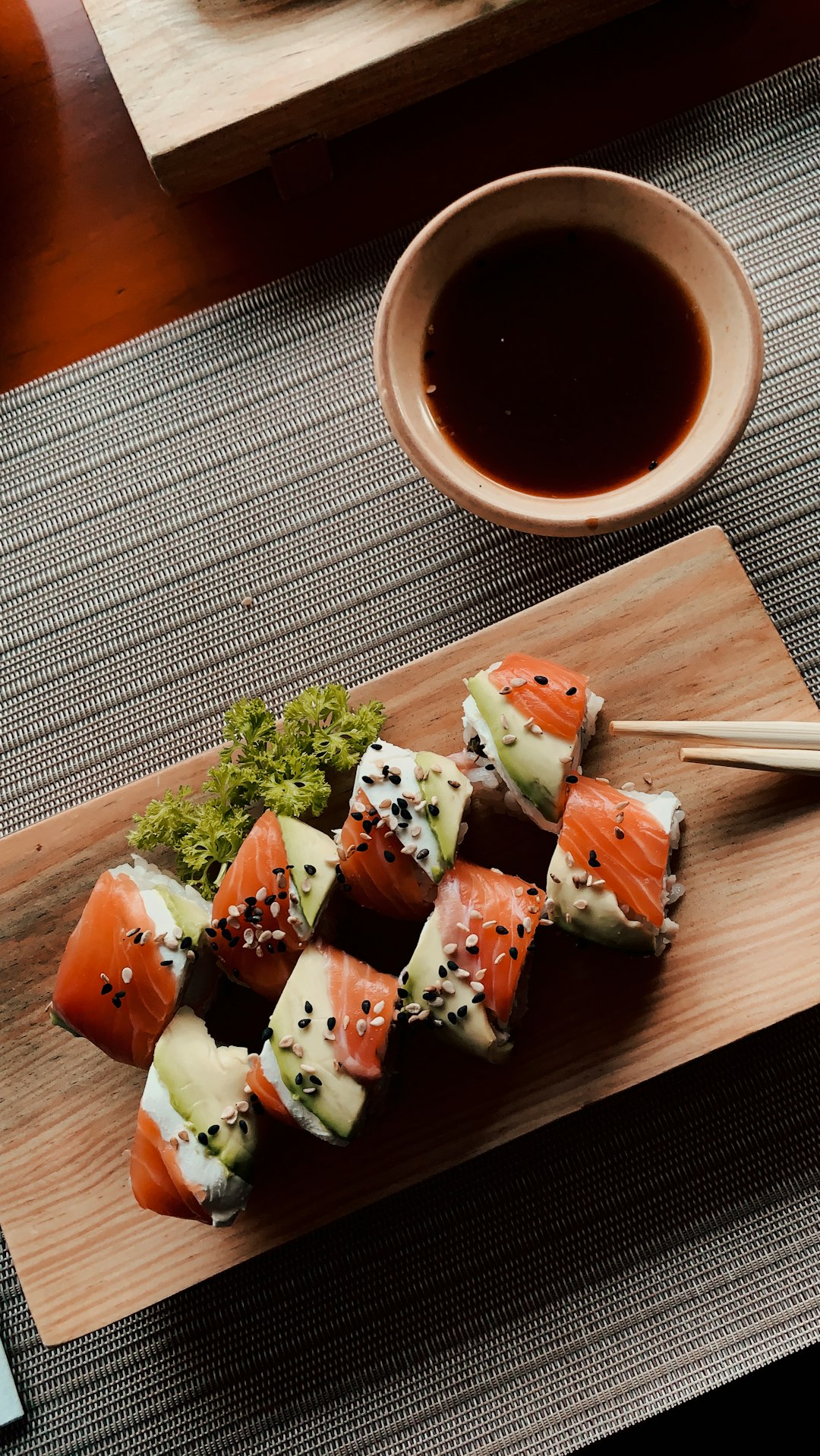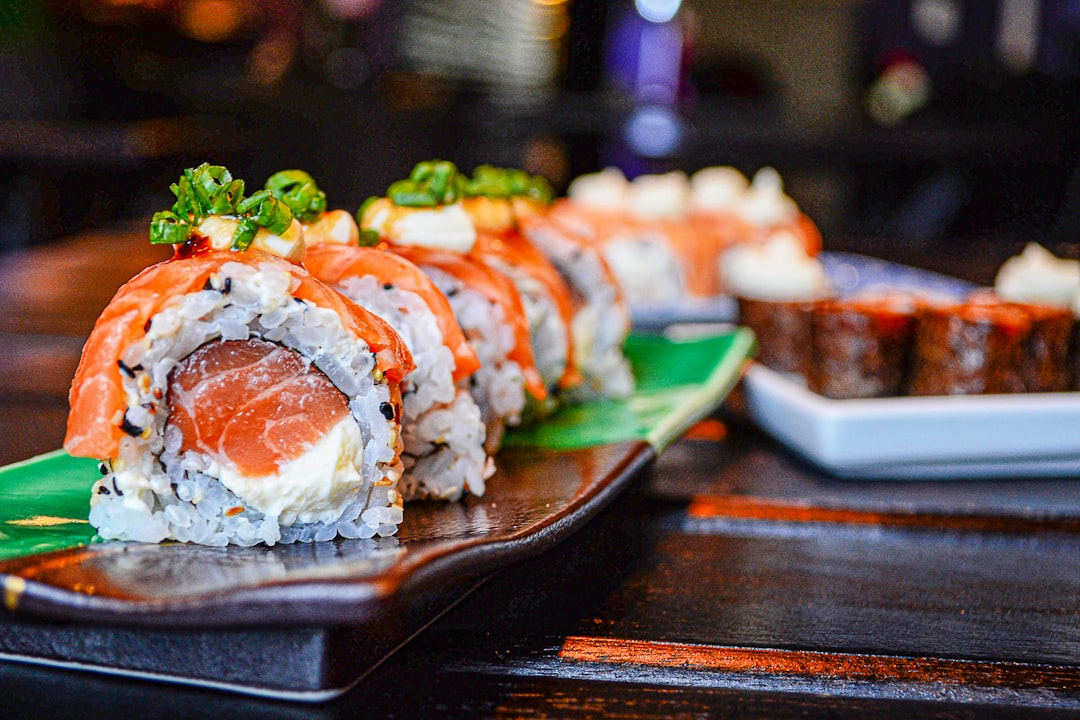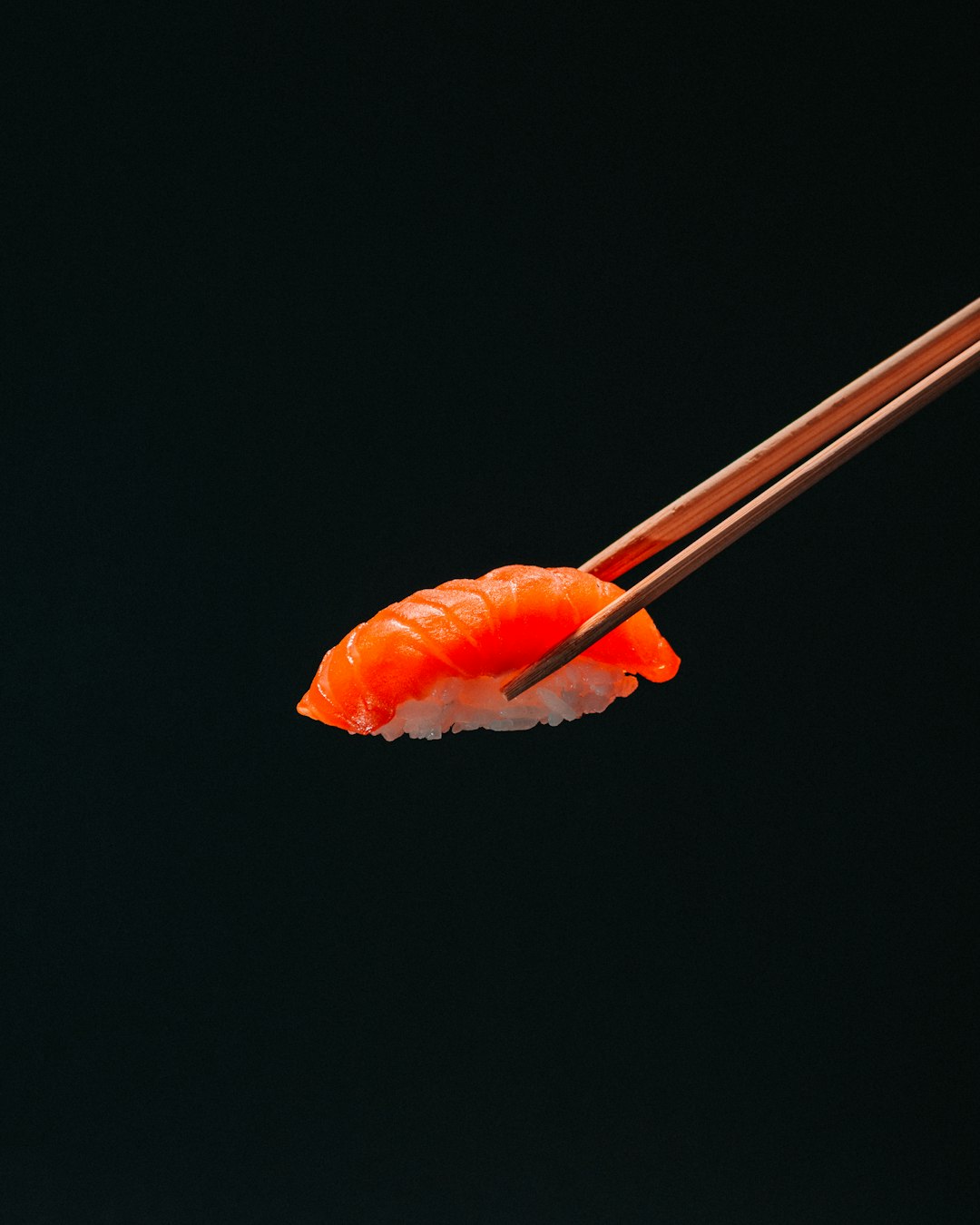Sushi
Sushi is a traditional Japanese dish that has become popular across the globe in recent years. It is often composed of cold cooked rice mixed with a variety of ingredients such as raw fish, seafood, vegetables, and even fruit. The components of a proper sushi platter can range from simple, traditional combinations to elaborate, contemporary creations.
What makes sushi so delectable is its combination of flavors and textures. The tangy bite of the vinegar used to make the rice is balanced out by the gentle sweetness of the fish and other ingredients. The chewy texture of the seaweed sheets provides a pleasant contrast to the softness of the rice, while the freshness of the fish gives it a briny, oceanic flavor.
The meticulous artistry involved in the presentation of sushi is another reason why it has gained such a following. The careful arrangement of the various ingredients within the roll and the imaginative shapes they can take, from flowers to flying birds, bring a unique and aesthetic element to the plate.
In short, sushi is a transcendental culinary experience, combining subtle flavors, vibrant colors, and artful presentation into one beautiful package. Whether you opt for a classic salmon and avocado roll or something more adventurous like a jalapeno-spiked tuna and rainbow-filled California roll, this Japanese delicacy will give your palate something to remember.
Sushi recipes
Amazing Sushi recipes sourced from the web.
The origin of Sushi
When it comes to the delicate and exquisite cuisine of Japan, few dishes can hold a candle to the beloved sushi. Although this delicacy has gained widespread popularity in recent decades, its origins in Japan date back to the 8th century.
The embodiment of oceanic bounty, sushi first emerged in the form of the narezushi, a simple combination of salted fish and fermented rice. This combination, which was often enjoyed as a snack amongst farmers and fisherman, showcased an ingenious method of preserving fish – allowing it to remain edible much longer than traditional methods.
However, this original version of sushi was far from the savory treat we know and love today. Rather than being eaten raw, the heavily salted fish was pressed onto balls of rice, then allowed to ferment for several to months.
Come the Edo period in the 18th century, sushi underwent a radical transformation and became the modern iteration it is today. With the dawn of new preservation techniques, such as cold storage and vinegar rice, sushi was transformed into the delicious and convenient snack that was devoured by many.
The first sushi shop opened in Edo (present-day Tokyo) in the mid-19th century, introducing the dish to a much wider audience that could now enjoy sushi far beyond its coastal roots. From there, it quickly spread throughout the country, becoming a beloved cultural pastime.
Today, sushi is renowned the world over, with fine dining restaurants and everyday takeaways serving up delicious versions of the dish. Whether its sashimi or maki rolls, nigiri or temaki, sushi continues to be a fan favorite, with it's combination of exquisitely fresh seafood, piquant aromatics and lusciously sticky vinegared rice.
Types of Sushi
Sushi is a traditional Japanese dish that has been renowned for centuries due to its unique flavor, texture, and nutritional value. Yet, it's only in the last few decades that sushi has begun to gain traction around the world. With the rise of culinary sophistication, sushi has become ever more popular over the years, and with its newfound popularity, there is a plethora of types to choose from.
One of the most popular types of sushi is maki sushi, which is composed of a variety of ingredients such as fish, pickled vegetables, and rice, all wrapped up in a sheet of seaweed (or nori). These rolls can then be cut into smaller pieces and served with soy sauce and wasabi. A variation of maki sushi is the temaki, which is usually in a cone shape and consists of larger pieces of seafood, vegetables, and other ingredients.
Perhaps the most distinctive type of sushi is nigiri, which is composed of a single filet of fish on a bed of pressed vinegared rice. This type of sushi is highly prized due to its delicate balance of flavors and textures. Another popular form of sushi is the sashimi, a dish composed of thinly sliced raw fish that is served without any other ingredients.
Finally, there is another type of sushi known as chirashi, which is composed of a bowl of rice with a variety of ingredients scattered on top. These ingredients can range from various fish and vegetables to pork, beef, and even egg.
Sushi is a dish beloved throughout the world, and with its newfound popularity, there are countless variations to try. From maki and temaki to nigiri and chirashi, the options available to the curious diner offer a wealth of possibilities. Whether you're looking for an exotic culinary experience or simply want to satisfy your craving for some delicious seafood, sushi offers an incomparable taste sensation.




